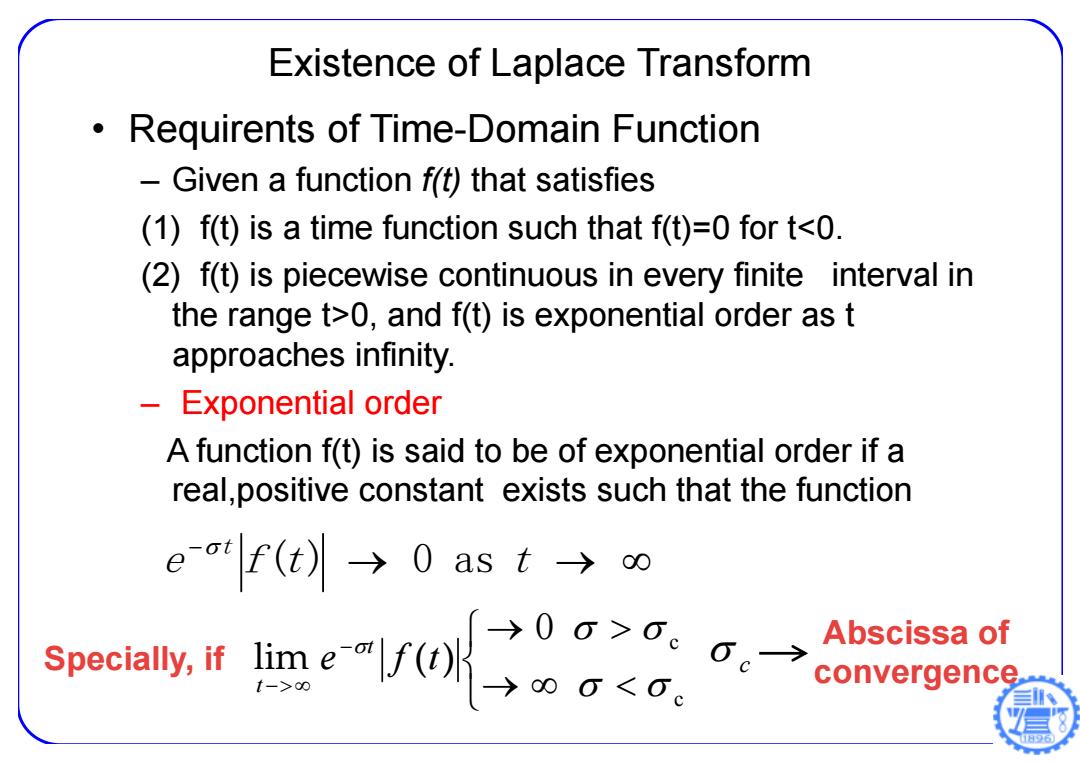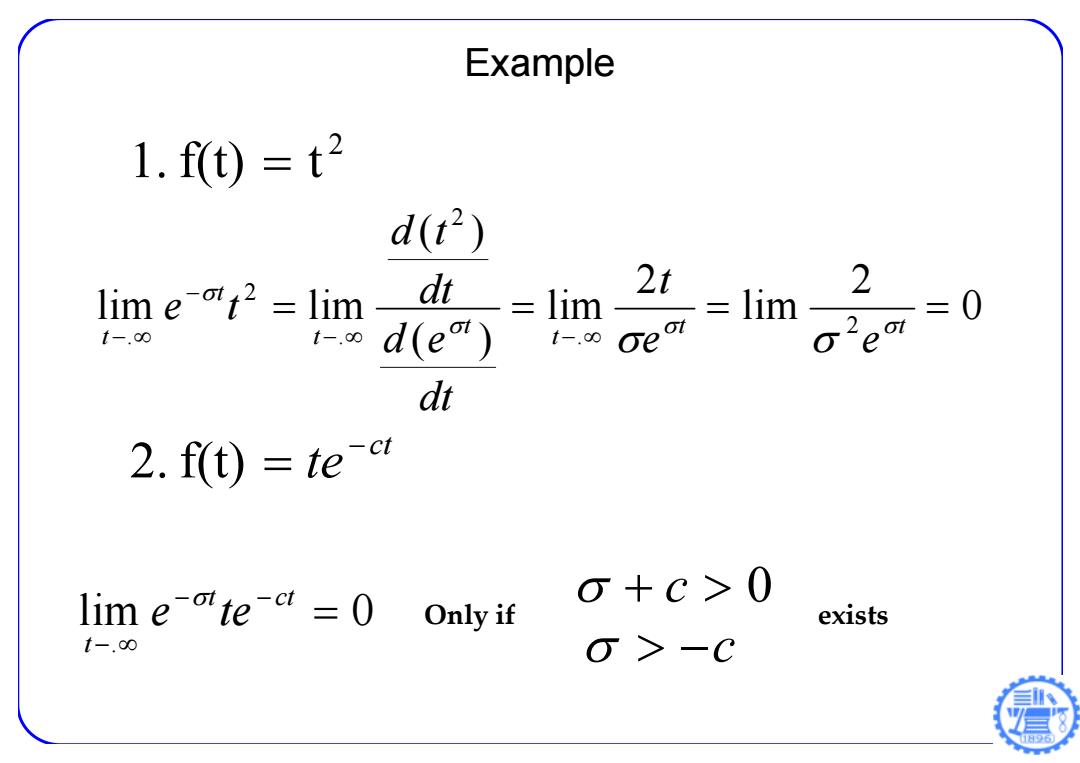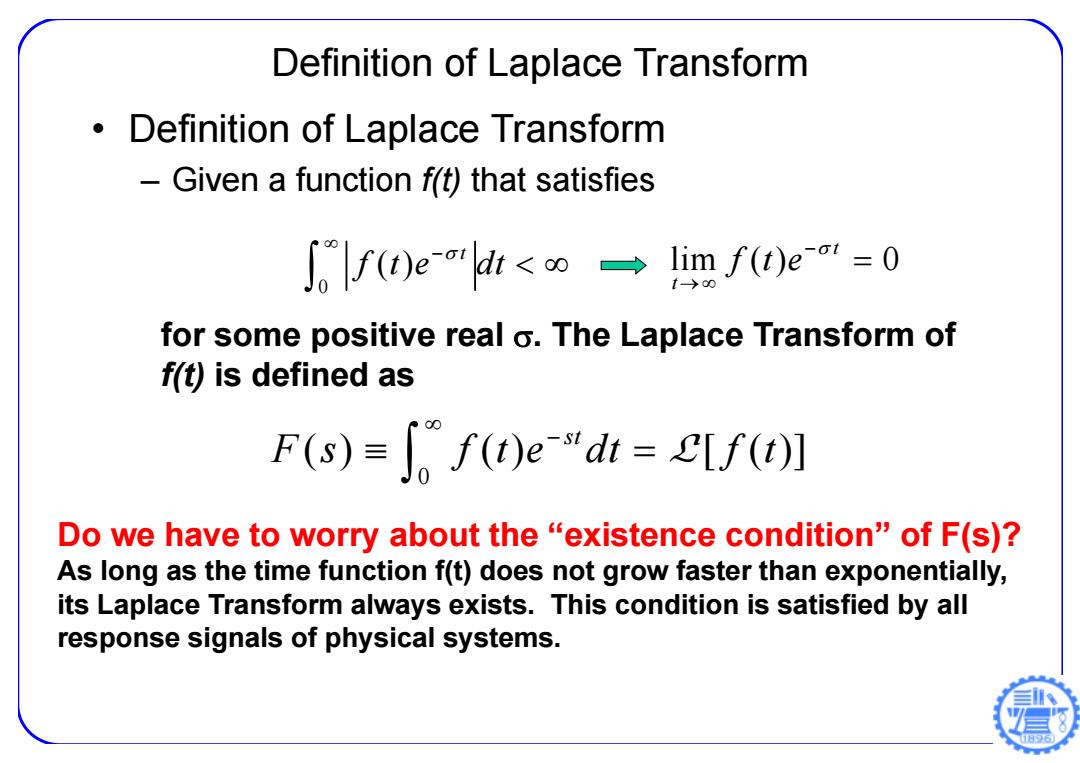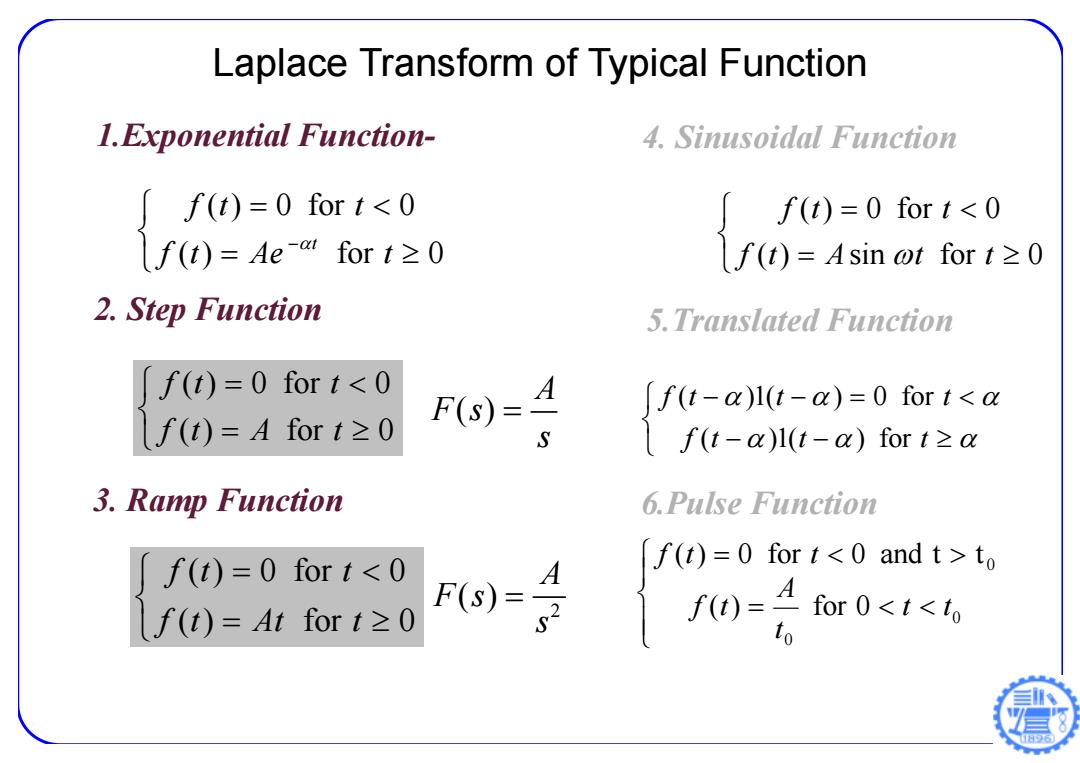
Existence of Laplace Transform Requirents of Time-Domain Function Given a function f(t)that satisfies (1)f(t)is a time function such that f(t)=0 for t<0. (2)f(t)is piecewise continuous in every finite interval in the range t>0,and f(t)is exponential order as t approaches infinity. Exponential order A function f(t)is said to be of exponential order if a real,positive constant exists such that the function e|ft→0ast→o spacatv.)0aa. Abscissa of convergence
• Requirents of Time-Domain Function – Given a function f(t) that satisfies (1) f(t) is a time function such that f(t)=0 for t<0. (2) f(t) is piecewise continuous in every finite interval in the range t>0, and f(t) is exponential order as t approaches infinity. – Exponential order A function f(t) is said to be of exponential order if a real,positive constant exists such that the function Existence of Laplace Transform e f t t t ( ) 0 as c 0 c lim e f ( t ) t t c Abscissa of convergence Specially, if

Example 1.f)=t2 d(t2) lim e-t2 =lim dt 2t 2 三 lim lim =0 t-.0 t-.0 d(e) t-.00 G" dt 2.f(t)=te-c lim e-ote-=0 o+C>0 Only if exists t-.o0 σ>-C
Example 0 2 lim 2 lim ( ) ( ) lim lim 2 . 2 . 2 . t t t t t t t e e t dt d e dt d t e t 2 1. f(t) t ct te 2. f(t) lim 0 . t ct t e te Only if c exists c 0

Example 3.ft)=e2 lim e-ae=lim e-)=co t-0 t-.0
Example ( ) . . 2 2 lim lim t t t t t e e e 2t 3. f(t) e

Definition of Laplace Transform Definition of Laplace Transform Given a function f(t)that satisfies 0fu)erdt<o→ lim f(t)e=0 t0 for some positive real o.The Laplace Transform of f(t)is defined as F(s)=∫nf(r)edt=[f(t】 Do we have to worry about the "existence condition"of F(s)? As long as the time function f(t)does not grow faster than exponentially, its Laplace Transform always exists.This condition is satisfied by all response signals of physical systems
• Definition of Laplace Transform – Given a function f(t) that satisfies 0 ( ) ( ) [ ( )] st F s f t e dt f t L Do we have to worry about the “existence condition” of F(s)? As long as the time function f(t) does not grow faster than exponentially, its Laplace Transform always exists. This condition is satisfied by all response signals of physical systems. lim ( ) 0 t t f te 0 ( ) t f t e dt for some positive real . The Laplace Transform of f(t) is defined as Definition of Laplace Transform

Laplace Transform of Typical Function 1.Exponential Function- 4.Sinusoidal Function [f(t)=0 for t<0 f(t)=0 for t<0 f(t)=Ae-for t≥0 f(t)=Asin ot for t≥0 2.Step Function 5.Translated Function f(t)=0 fort<0 f(t)=A for t≥0 F()-4 f(t-a)1(t-a)=0 for t<a lf(t-ax)l(t-a)fort≥ax 3.Ramp Function 6.Pulse Function f(t)=0 for t<0 f(t)=0 for t<0 and t>to A f(t)=At for t≥0 F(s)= f0=2or0<1<, to
Laplace Transform of Typical Function 1.Exponential Function- ( ) for 0 ( ) 0 for 0 f t Ae t f t t t 2. Step Function ( ) for 0 ( ) 0 for 0 f t A t f t t 3. Ramp Function ( ) for 0 ( ) 0 for 0 f t At t f t t ( ) sin for 0 ( ) 0 for 0 f t A t t f t t 4. Sinusoidal Function 5.Translated Function f t t t f t t t ( ) 1 ( ) for ( ) 1 ( ) 0 for 6.Pulse Function 0 0 0 ( ) for 0 ( ) 0 for 0 and t t t t t A f t f t t ( ) A F s s 2 ( ) A F s s